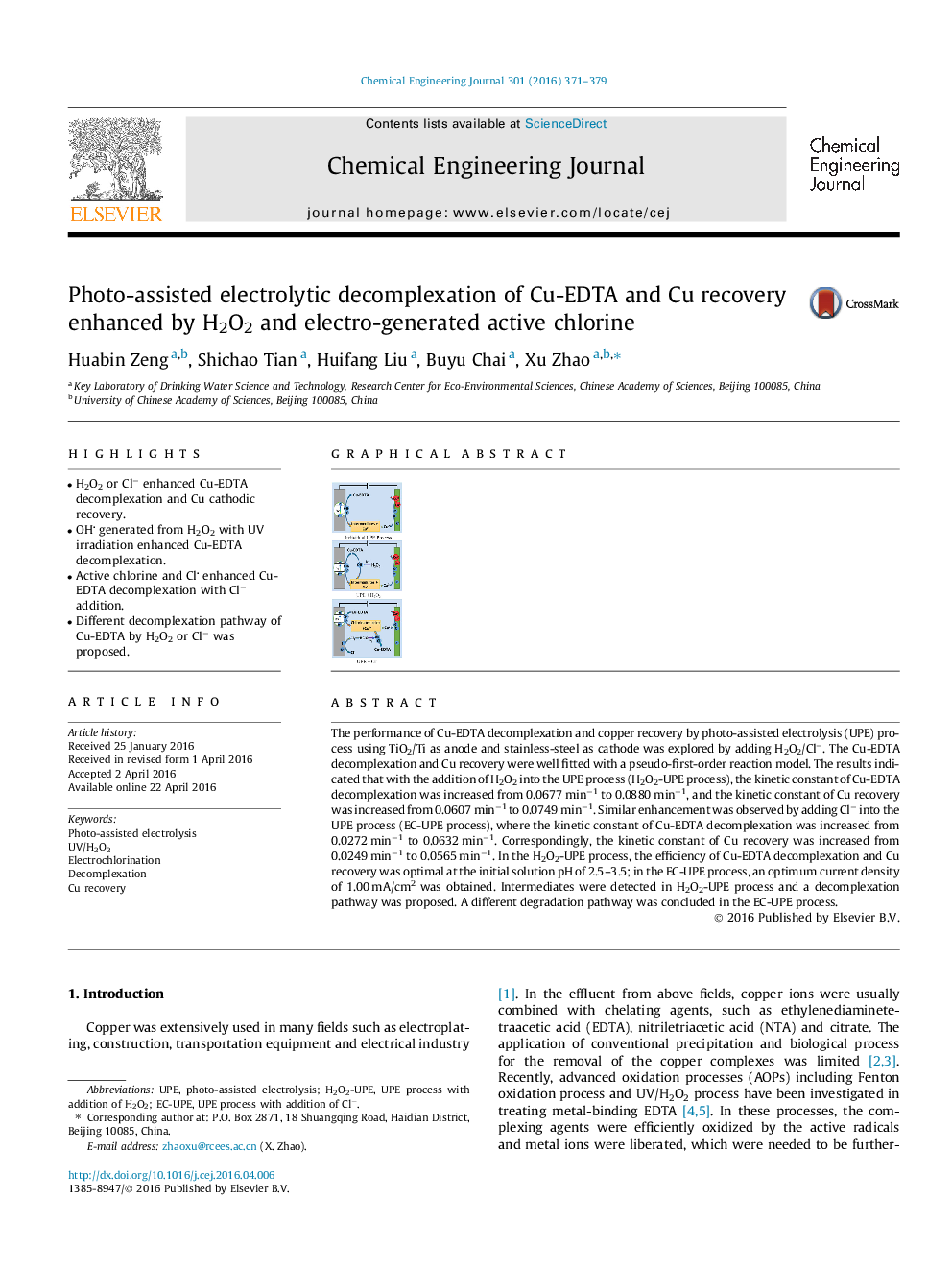| Article ID | Journal | Published Year | Pages | File Type |
|---|---|---|---|---|
| 145400 | Chemical Engineering Journal | 2016 | 9 Pages |
•H2O2 or Cl− enhanced Cu-EDTA decomplexation and Cu cathodic recovery.•OH generated from H2O2 with UV irradiation enhanced Cu-EDTA decomplexation.•Active chlorine and Cl enhanced Cu-EDTA decomplexation with Cl− addition.•Different decomplexation pathway of Cu-EDTA by H2O2 or Cl− was proposed.
The performance of Cu-EDTA decomplexation and copper recovery by photo-assisted electrolysis (UPE) process using TiO2/Ti as anode and stainless-steel as cathode was explored by adding H2O2/Cl−. The Cu-EDTA decomplexation and Cu recovery were well fitted with a pseudo-first-order reaction model. The results indicated that with the addition of H2O2 into the UPE process (H2O2-UPE process), the kinetic constant of Cu-EDTA decomplexation was increased from 0.0677 min−1 to 0.0880 min−1, and the kinetic constant of Cu recovery was increased from 0.0607 min−1 to 0.0749 min−1. Similar enhancement was observed by adding Cl− into the UPE process (EC-UPE process), where the kinetic constant of Cu-EDTA decomplexation was increased from 0.0272 min−1 to 0.0632 min−1. Correspondingly, the kinetic constant of Cu recovery was increased from 0.0249 min−1 to 0.0565 min−1. In the H2O2-UPE process, the efficiency of Cu-EDTA decomplexation and Cu recovery was optimal at the initial solution pH of 2.5–3.5; in the EC-UPE process, an optimum current density of 1.00 mA/cm2 was obtained. Intermediates were detected in H2O2-UPE process and a decomplexation pathway was proposed. A different degradation pathway was concluded in the EC-UPE process.
Graphical abstractFigure optionsDownload full-size imageDownload as PowerPoint slide
